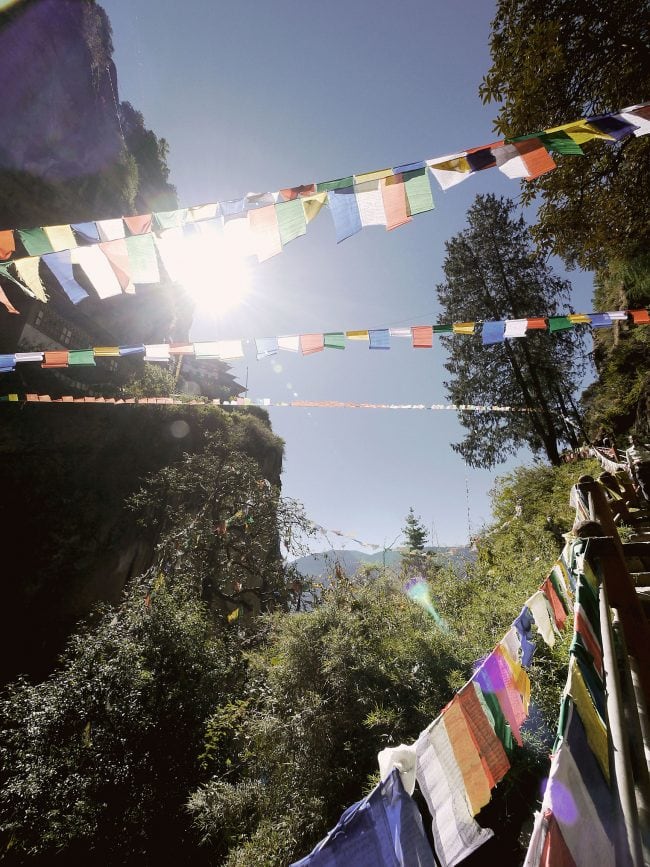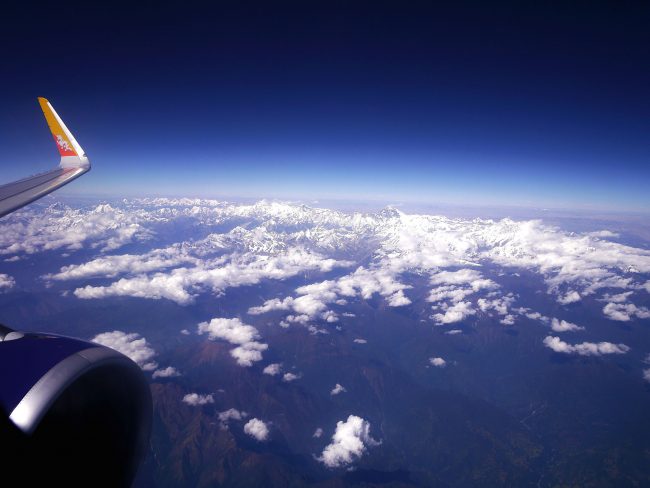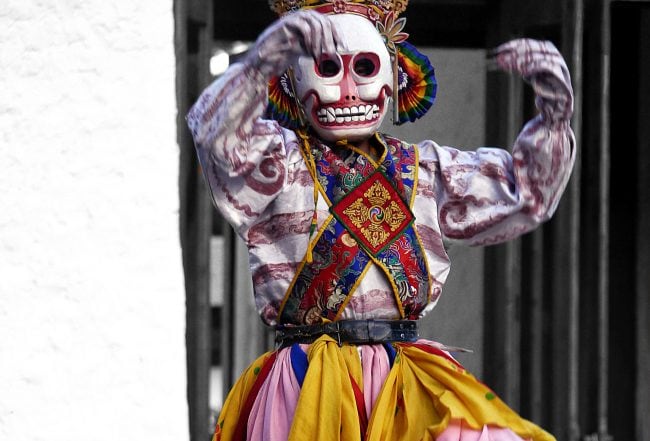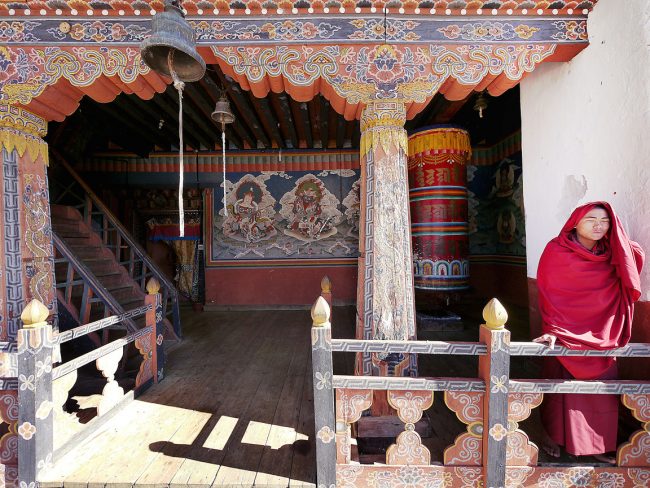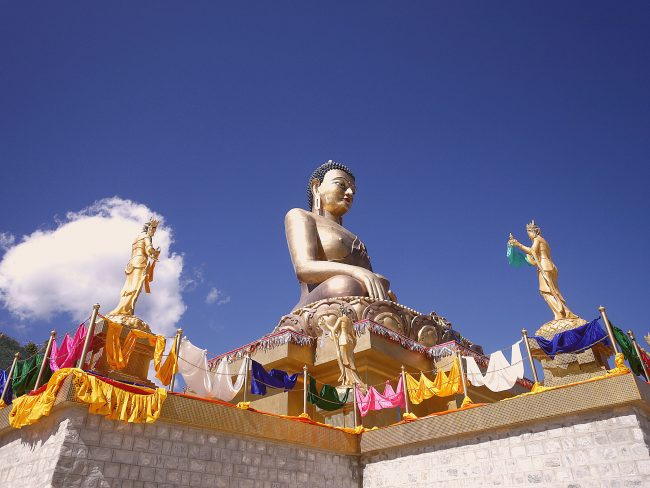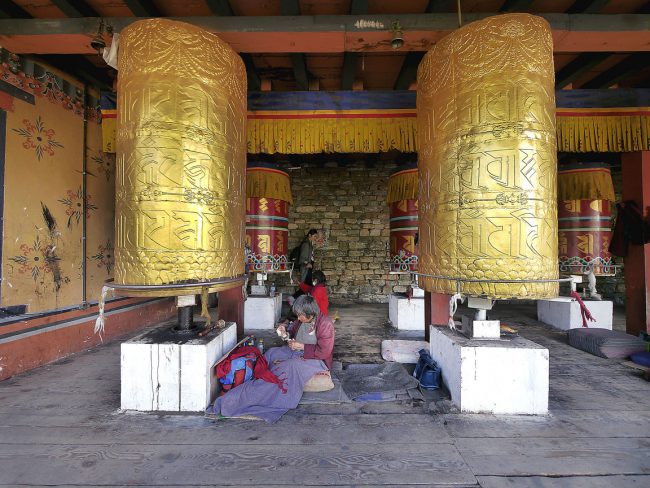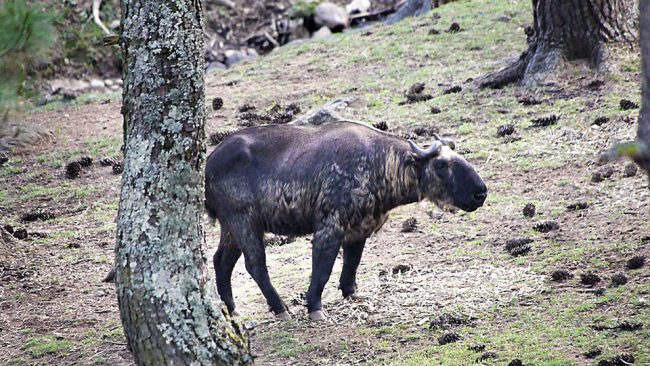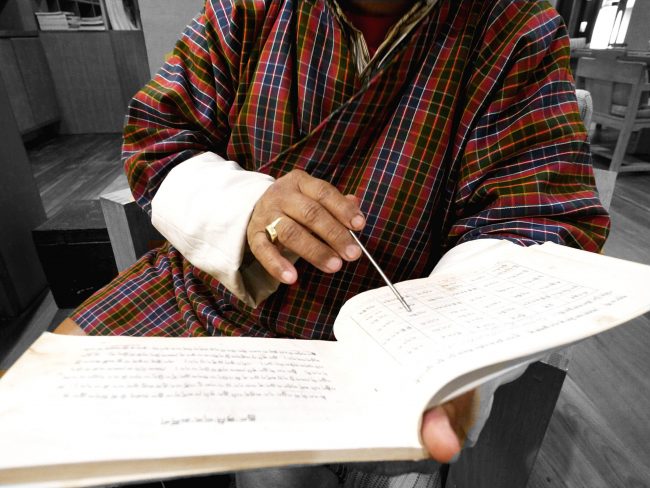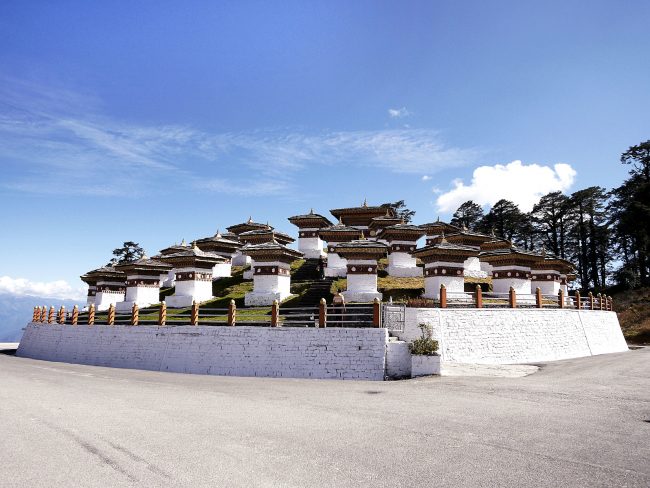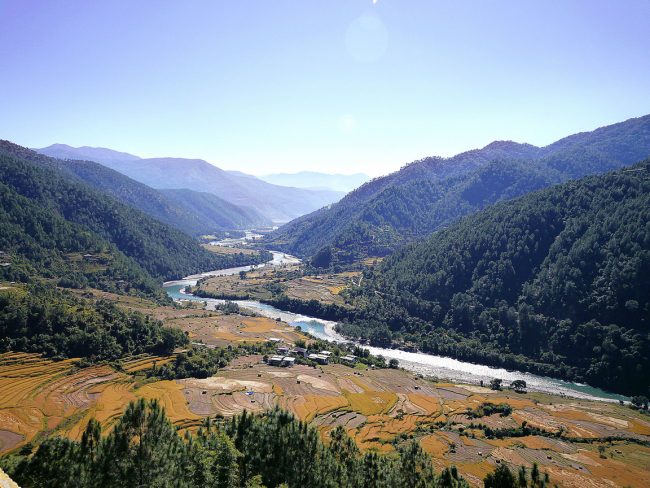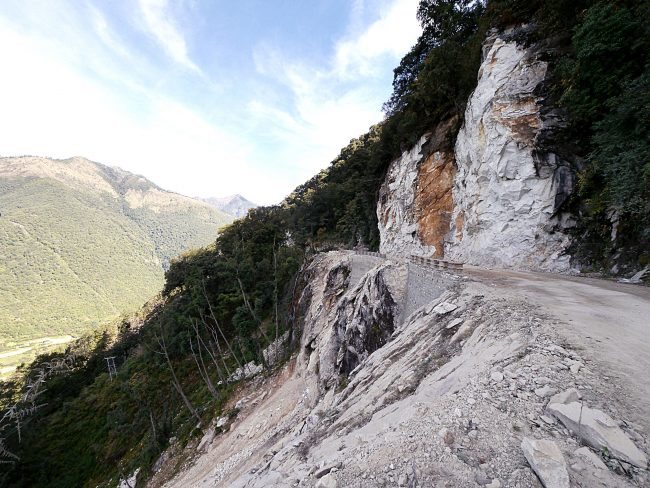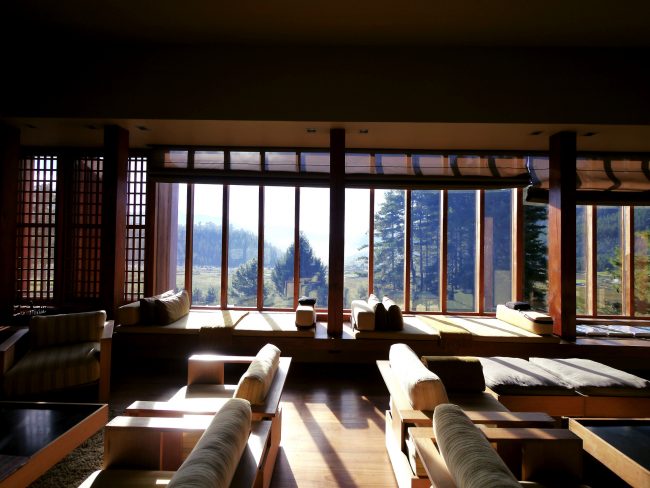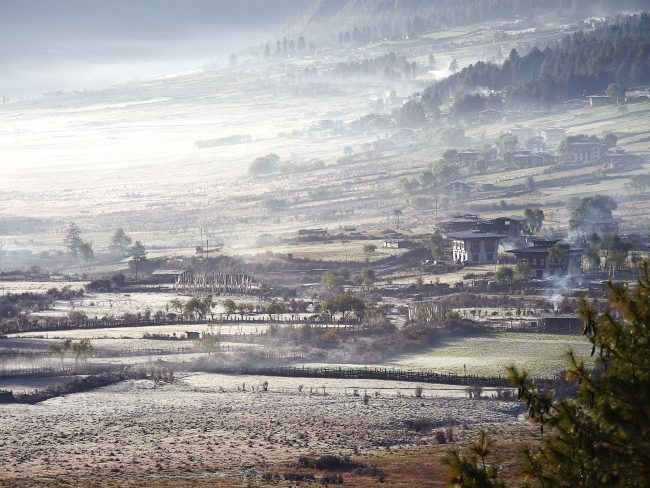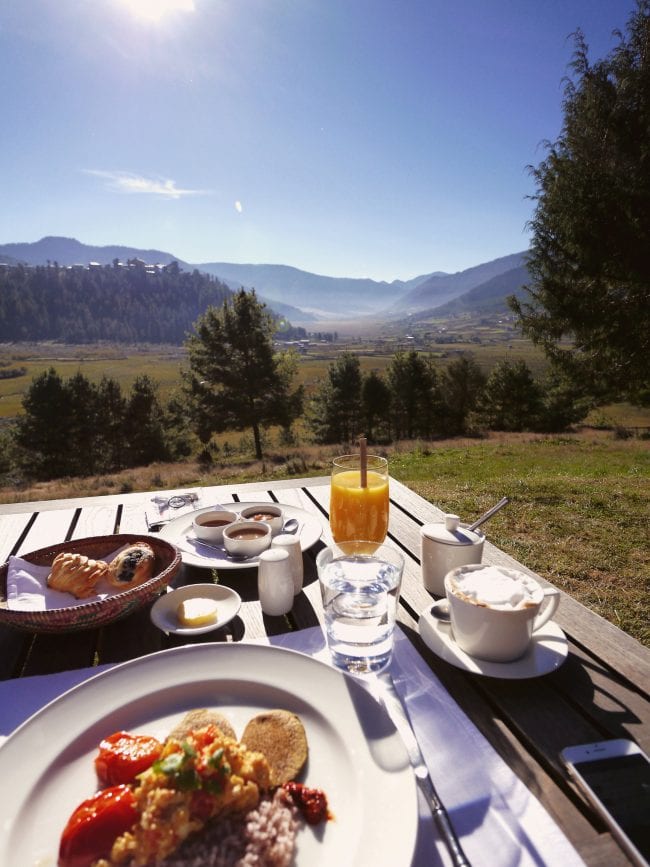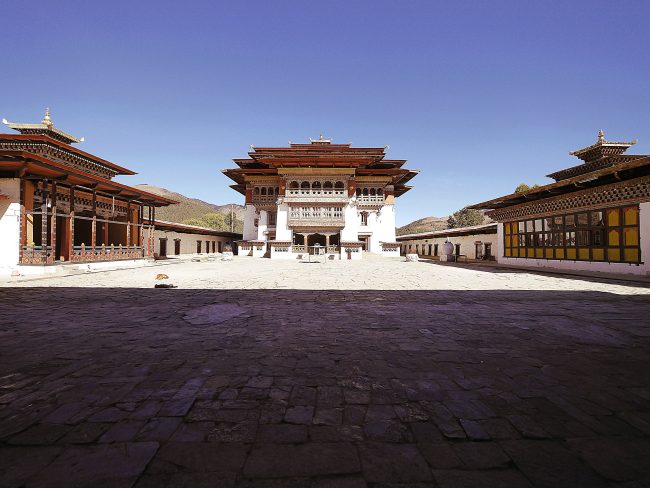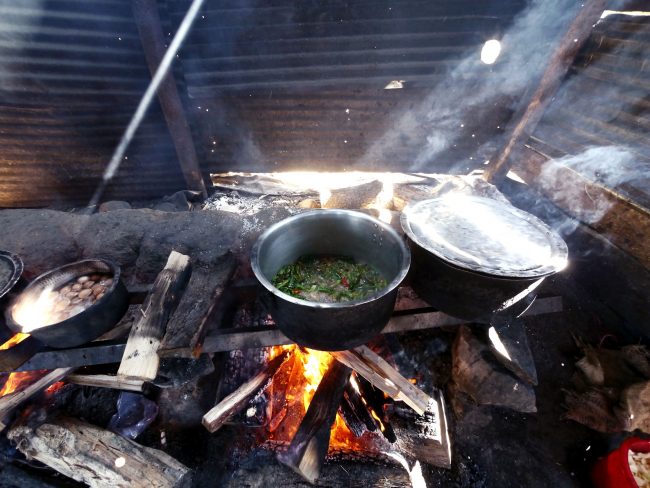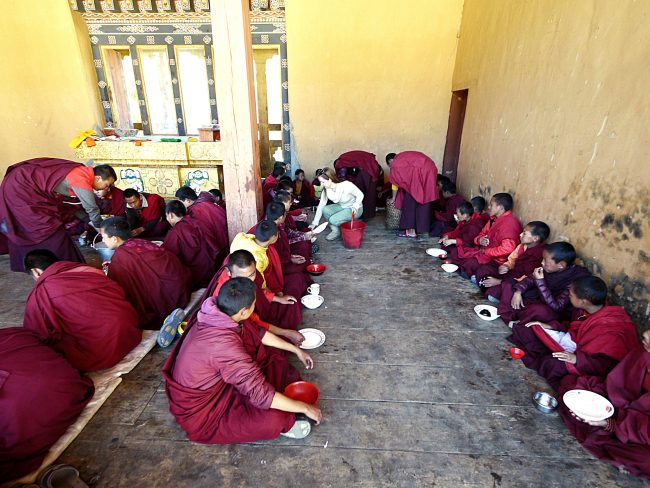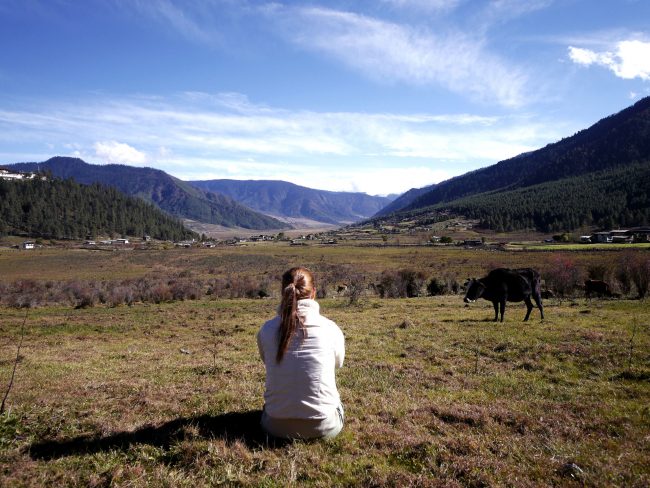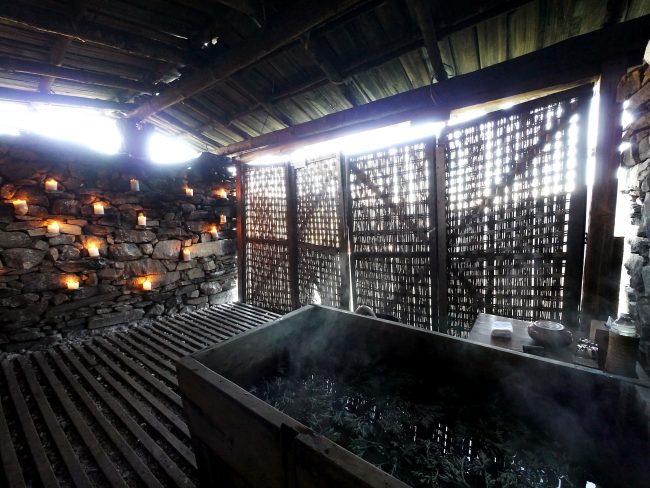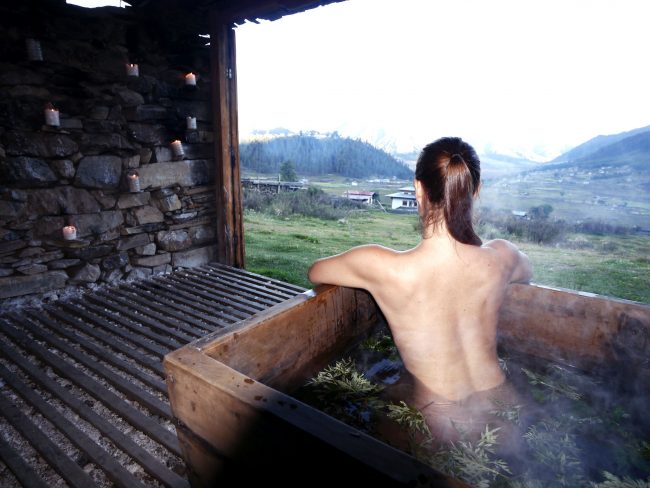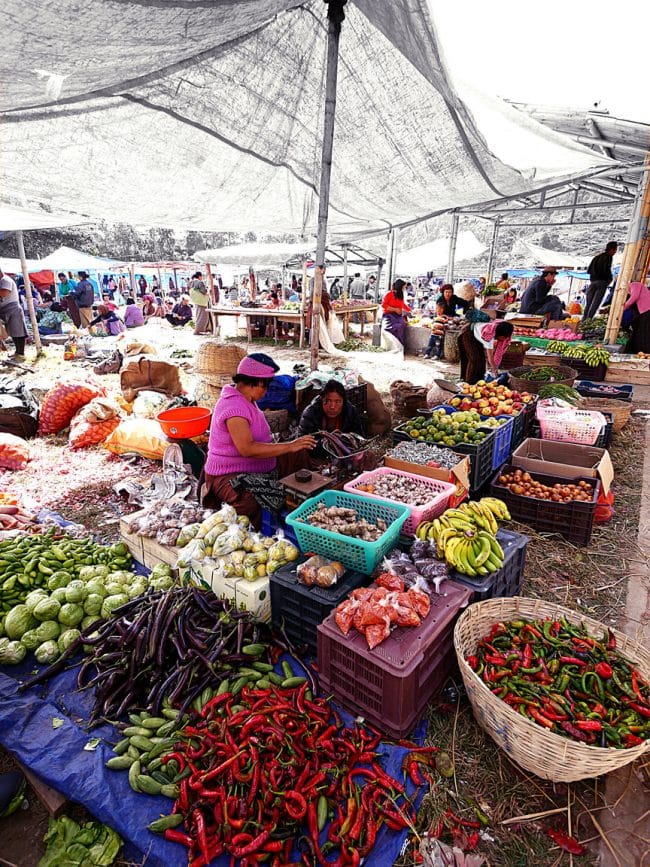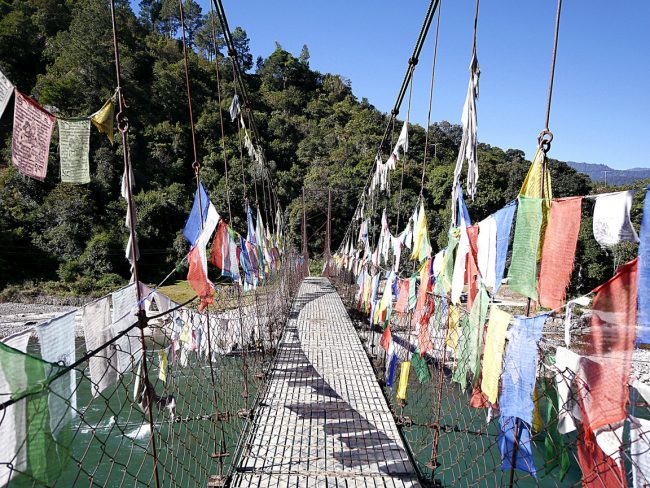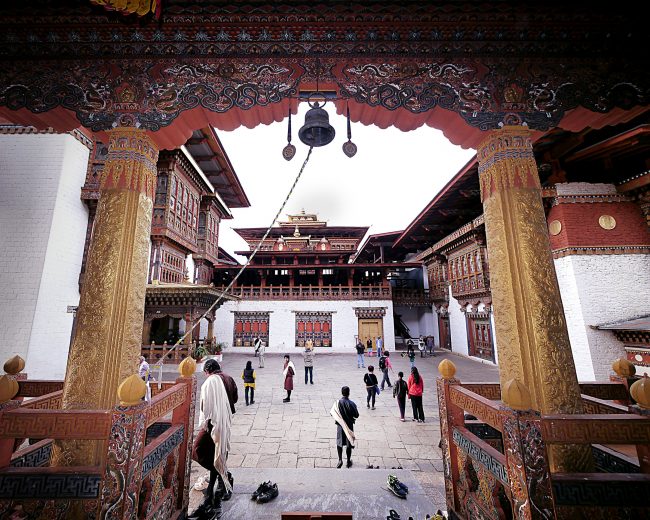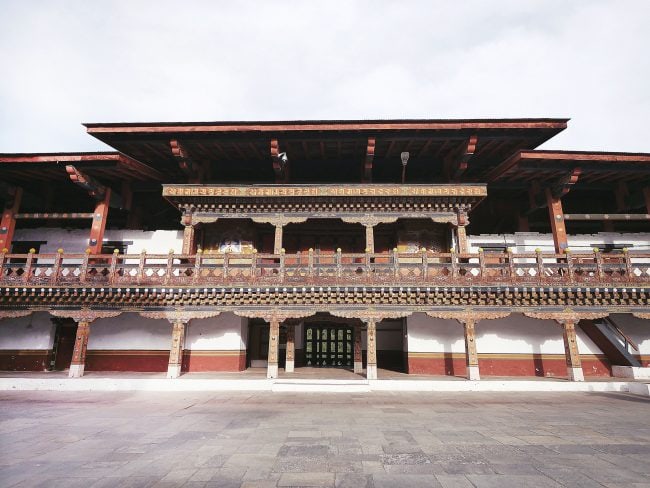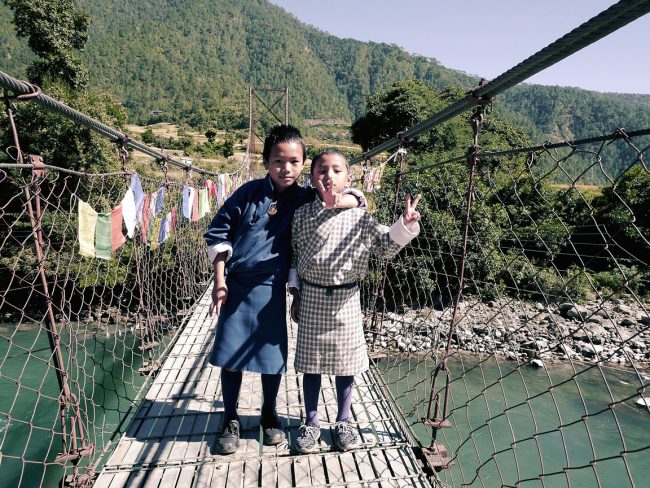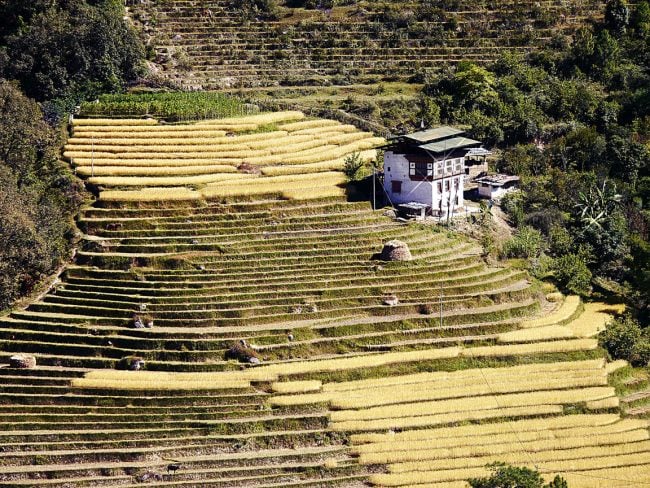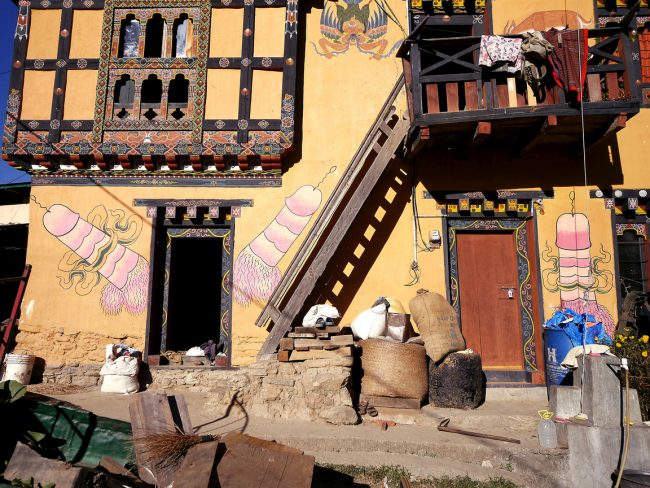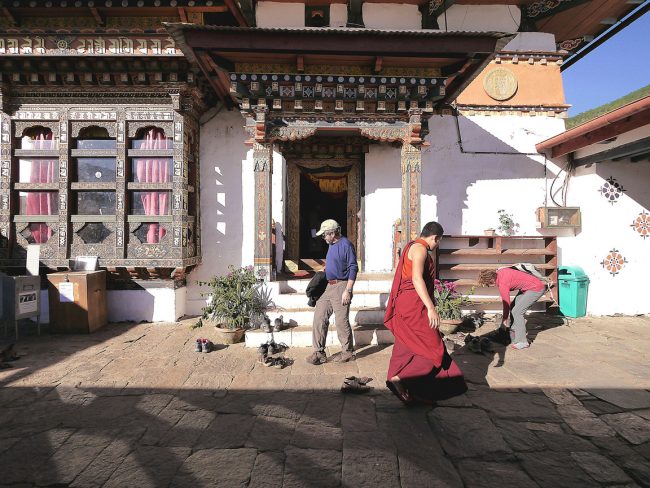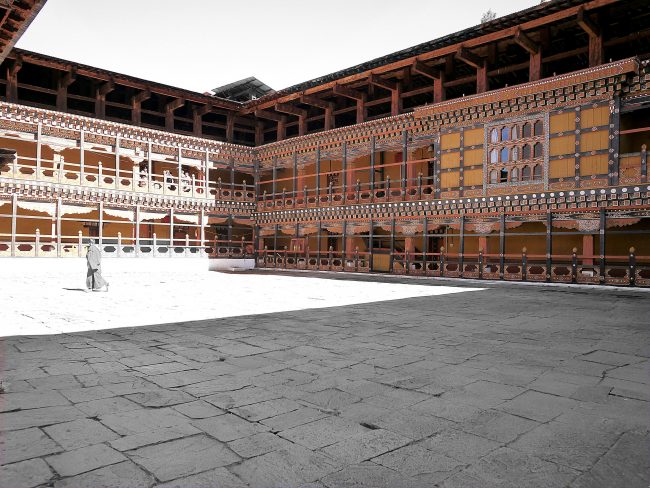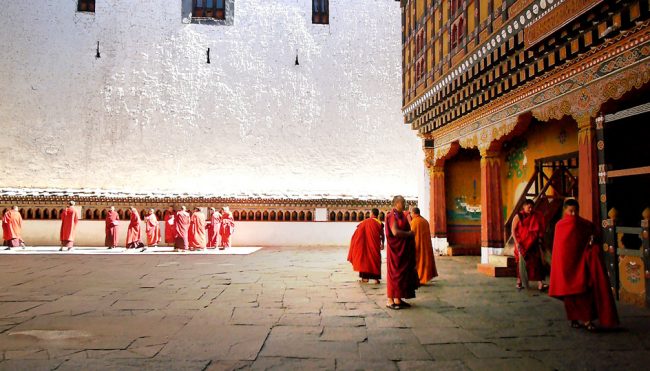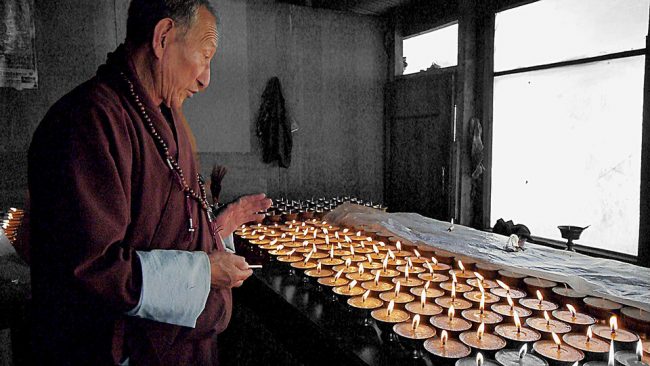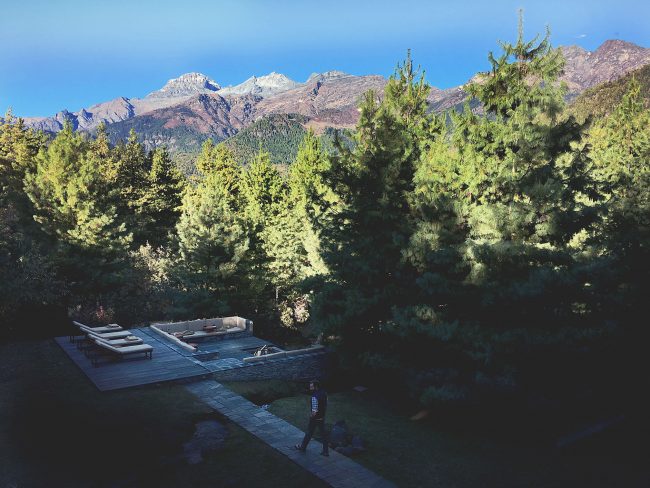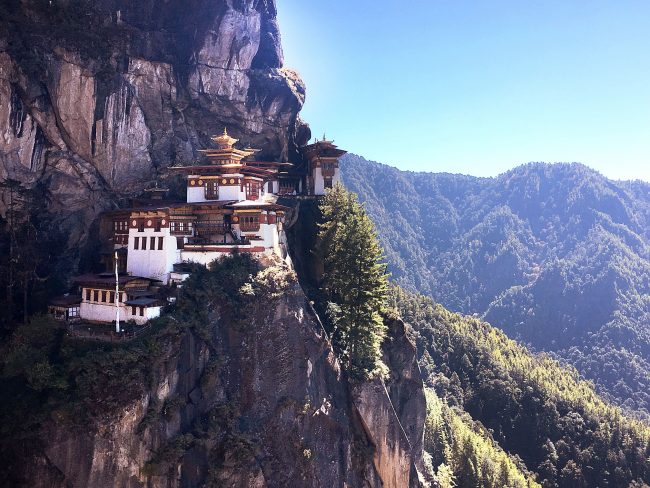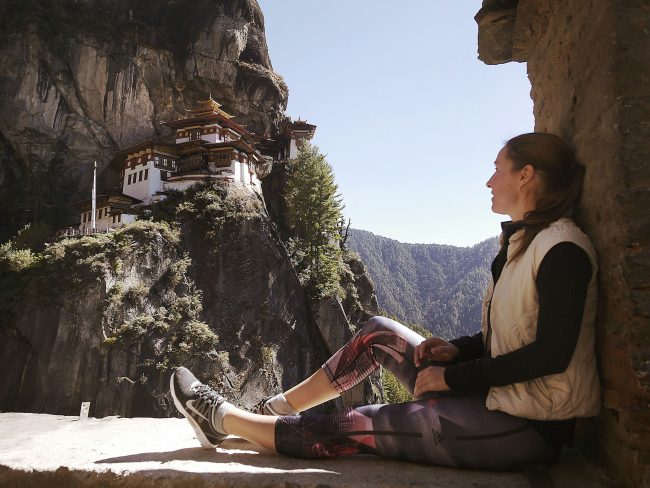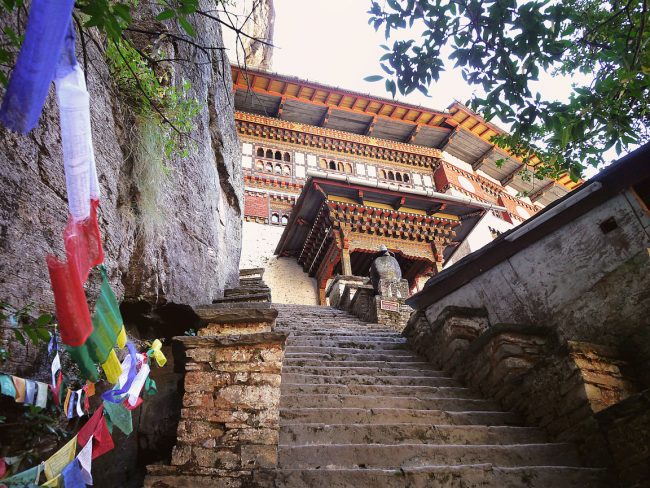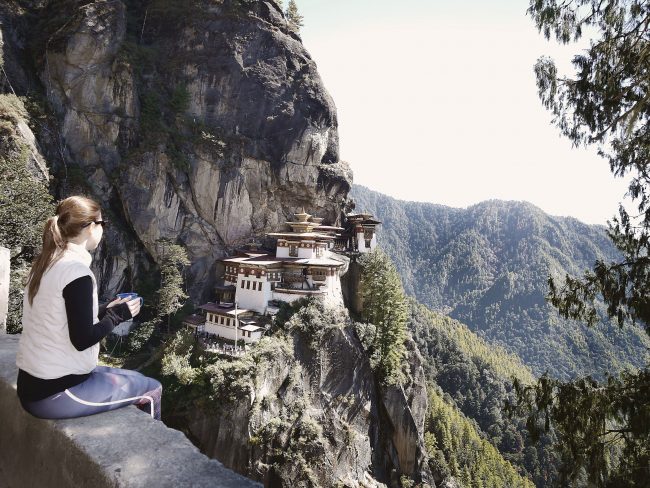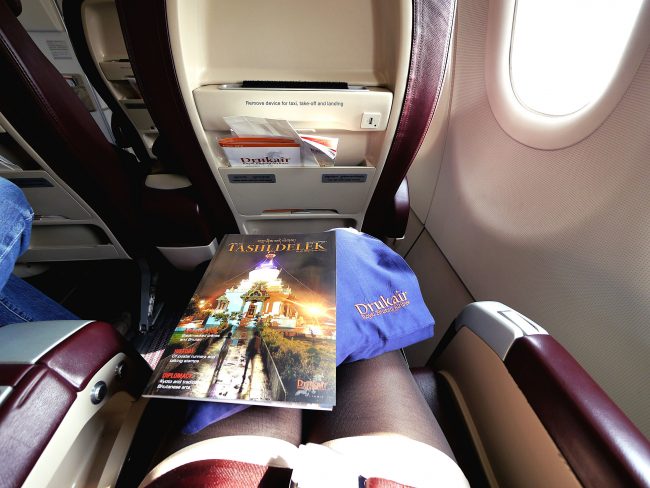As a self professed Aman Junkie, I had my eyes set on the fascinating country of Bhutan and Amankora for a very long time, I had even corresponded with the team a couple of times when it all seemed to fall into place. But it never did. Bhutan’s short high season and expensive price always seemed to stop me. Finally, I managed to visit the fascinating Land of the Thunder Dragon on a nine day journey through Bhutan.
The 9 day journey through Bhutan with Aman Resorts
My journey through Bhutan was perfect but, like with all good things in life, it ended too quickly. If I could have stayed longer, I would and perhaps 12 days would have been the perfect duration for a trip but nine days was great for a real break and immersion into Bhutanese culture and traditions. I spent two nights each in Thimphu and Gangtey, one in Punakha and three in Paro. Ideally, two nights at each lodge would have been best, but Punakha is very popular and it was booked out. The itinerary that follows would work just the same with two nights at each lodge. If you have an additional three nights, you can spend them in Bhumthang with Amankora, or venture to other parts of the country. Organising a trip to Bhutan can be time consuming and requires careful planning so be sure to check my guide to Bhutan.
Day 1 – Arrival in Thimphu
Landing in Paro is one of the most incredible and nerve wrecking experiences. Paro airport is one of the few in the world where pilots land without any help and only start to see the runway when they are almost there.
After landing and going through immigration, a very painless process, I collected my luggage and met my guide and driver for the duration of my trip. All visitors to Bhutan must travel with a guide and driver and pay a minimum package fee. My guide, Penjor, and my driver Tshering (one of Bhutan’s most common names), were very friendly and exuded the Bhutanese peace and spirituality that was contagious. They were always ready to anticipate my needs, always o the lookout for my comfort and always insisting in making my stay special. When I fell asleep in the car, Penjor slid a pillow under my neck to make sure I would not hit the window at every turn. When we went trekking, they insisted in carrying my things and always had water and snacks ready should I get hungry or thirsty. The level of attention to detail was astounding. I even taught Penjor how to take hyperlapses for me.
As they could sense that I was a bit tired of the travel, after the introductions, we drove to the lodge in Thimpu, about an hour and a half away from the airport, where I relaxed for the rest of the day. In the evening, the resort offered traditional dances by the outdoor fireplace coupled with warm blankets, sweets and a glass of Pimms.
Day 2 – Thimphu
Thimphu is the capital of Bhutan but a rather sleepy and peaceful place. We spent the day with the first doses of Bhutanese culture and heritage at the Dechenprodrang Monastery, the Palace of Bliss, up above the city where I got my first sighting of the beautifully colourful wall paintings in Bhutanese temples and monasteries. This is a working monastery and you could see the monk’s residence next to the monastery. Around 450 monks reside here during the summer months and prayer flags dance in the wind on the way up. From there, we could see the Royal Palace and Government buildings as well as the entire valley below.
After the monastery, we drove to Buddha Point where the largest statue of Buddha stands. This was pretty similar to other statues in places like Phuket. I was lucky enough to arrive at the time when the country’s main Abbot was about to provide a blessing to the entire country in the presence of the Prime Minister. I actually saw him about a few meters away. As Bhutan is incredibly safe, he had no personal bodyguards or protection, he just got off the car and greeted the officials.
After lunch back at the lodge, we set out to see some of the country’s traditional arts, in particular a weaving center, a paper making factory and a Thanakha shop. We also drove into what is surely one of the most peaceful capitals in the world and got up close with the Clock Tower and the National Memorial Chorten, built to honour the third Bhutanese King.
The chorten, or stupa, is filled with the elderly reciting prayers while passing beads, circumambulated the stupa clockwise and turning the prayer wheels to ask for their loved ones and all beings to be blessed. Although it is in the middle of the city, it is a primarily spiritual and peaceful place with an aura of gratitude and stoicism.
We ended a rather relaxed day at the Takin Zoo to observe these strange looking animals better suited to video games from the distance. You can also go in if you so wish.
Back at the resort, I attended a talk about Buddhism by one of the most important Buddhist Master Teachers and an Astrologer reading with the King’s astrologers where my future was read. When I got back to my room, after dinner, the turn down service had left a famous book on the dogs of Thimphu. In the city, dogs seem to be quiet during the day and bark incessantly at night, not letting tourists sleep. A local writer put this together as a story narrated by one of the stray dogs and it caught on.
Day 3 – Gangtey
Getting up at the crack of dawn to see the sunrise through the thick forestry around the lodge I enjoyed a fantastic breakfast before we set off for the very long drive to Gangtey. Google Maps anticipated it would take almost 5h to cover the 130km journey but we would take even longer because of stops at various landmarks and lunch.
The first stop in the journey was Dochula Pass, at 3,100m high, one of the most famous landmarks and a beautiful view point from where to observe the Bhutanese Himalayas highest peaks. The Dochula Pass includes the 108 Druk Wangyal Chortens to commemorate the fallen Indian army soldiers that was built by the eldest Queen Mother. This is always a busy place visited by all, even those who do not venture beyond Thimphu and Paro so expect the only moment when you might feel that there are tourists in Bhutan. The pass has toilets, useful in the long drive, and a cafe from where the 180 degree views over the snowcapped peaks is divine.
After Dochula, we continued the drive down through the forests and valleys and stopped for lunch on the picnic the lodge had prepared. Around 5h later we got to Punakha Valley and continued the drive up towards the clouds again through the world’s most incredible roads.
Narrow, not more than a gravel cow path at times, and wiped away by landslides every so often, these were some of the most hair raising turns I had ever seen. Tshering’s focus was unwavering and, as I do not get car sick, I had a great time enjoying the amazing mountain scenery and scenes of life in the countryside until we reached Gangtey, already in the late afternoon.
Gangtey’s Amankora lodge was my favourite. Its location, at the bottom of the valley but on one extreme, overlooking the mountains and the few scattered houses, afforded the most incredible views and gave me a sense of peace and of having arrived like no other place.
I got to my room and could not peel my eyes off the view. When the sun set, the clearest sky revealed a sheet of stars like no other. There was absolutely no light pollution in the valley as the houses are lit with wood fires so the night was pitch black. I asked for my room’s fireplace to be lit and then scrubbed my skin with almond oil and sea salt, switched off the lights, lit the candles and soaked in the bathtub. I felt as if I had arrived in paradise.
Day 4 – Gangtey
I woke up early to see the sun rise over the valley. At first, as the light started to project from behind the mountains, the mist came down to the valley and covered it all.
Smoke started to come out through the chimneys of the villagers’ houses and the warmth and light of the sun eventually cleared all the fog. By the time I made it out to breakfast, it was a crisp blue sky winter day and the green grass sparkled as the sun rays reflected on the frost.
It was warm enough, under the sun, to enjoy breakfast outside so I ordered a typical Bhutanese dish of buckwheat pancakes and eggs and watched the ice melt from the trees and bushes until it was time to meet Tshering and Penjor.
We spent the morning at the Gangtey Monastery atop the valley where a 60 monk community lives. The lodge had organised for me to offer lunch and help cook and serve it to the monks so, me, Tshering, Penjor and the monastery’s cooking team spent the next couple of hours making lunch for the community.
We bought cheese, potatoes, eggs, tomatoes, chillies, lentils, green beans, rice and other condiments and put together a simple but flavourful meal with basic pots and a wood fire in a hut under the monastery. I chopped chillies, cut potatoes and generally helped around until it was all ready.
We then went up to serve the monks and finally sat down with them to enjoy the meal. It was a fascinating experience and one that was very genuine. This was not a staged activity for tourists, they cooked the same way they always do, only that day I was the one who paid for it. It cost about $100 to feed the entire group.
After lunch, we went back to the lodge to change my barbecued clothes after spending the morning in a smoked filled hut, and then went to visit the black-necked crane center where they had binoculars to spot the first few birds who had already arrived in the valley.
Black-necked cranes are considered sacred and auspicious and only come to Bhutan around November every year and stay until spring time when they fly back to Tibet.
After watching a documentary of these much worshipped animals, I went for a walk along streams and villages with Penjor. As it was already day 4, I had almost fully acclimatised to the altitude, despite Gangtey was almost 3,000m high, but I could still feel I was slightly short of breath.
An additional day would have afforded more options to hike around the area as the thick fir forests were magical and inviting and I wish I had spent one more night there.
In the evening, as the sun was starting to come down, I headed out to one of the wooden huts where the spa team had prepared a hot stone bath for me. This is a tradition that is common across the country but particularly beautiful here, where the bathtubs have views over the valley at sunset.
The hot stones had been heated for 3-4 hours by a local villager on a wooden fire. Once they were hot enough, they were placed in the bathtub, on a second compartment that shared the same water I was to soak into. The bath had been filled with Artemisa leaves, a local plant that smelled a bit like mint and which grows wildly in Bhutan. The plant is believed to have great properties and is also an ingredient in Absinthe.
I walked through the paths around the lodge up the hill until we reached the stone bath hut. A couple of villagers had spent the entire day heating the stones and preparing the bath and, after a warm glass of apple cider, I was led to the stone hut. Inside, the lodge had lit butter lamps on the wall and the bath was ready.
There was a bucket with cold water next to it in case it got too hot and, if the temperature dropped, I just needed to ring a bell and the spa team would add more hot stones. I took my clothes off and attempted to get into the steaming hot water that must have been over 42 degrees Celsius.
It took several trials and many toe dipping moments and cold water scooping before I finally managed to stand the hyper hot water and submerge my whole body into it. I rang the bell and the therapist came to open the doors of the hut so that I could admire the sunset on the valley.
I could stay there for as long as I wanted and I suspect I spent around 45min in the water. Surprisingly, I did not prune, not sure if the Artemisia leaves had anything to do with that. Once the sun had hidden behind the mountains, I got out. Without the sun rays the temperature must have dropped below 10 degrees but I was so hot because of the bath that I could not feel it.
Relaxed and marvelled at the incredible beauty of nature and the landscaped, I walked back through the paths that were then filled with cows returning home from the day’s grazing.
Day 5 – Punakha
The journey back was to be split with a stop in Punakha for a night. We departed a bit earlier than usual to make it to the tropical valley of Punakha before the weekend market closed.
I love markets and their explosion of colours and this was no exception. It also gave me an insight into what locals eat, beyond what the lodge offered, and into some of the Bhutanese snacks and habits, like chewing the horrible betel nuts.
After the market we arrived at the lodge for a fantastic lunch at the patio with views over the river and a warm sun. Despite being November, I enjoyed my meal in tshirt.
After lunch, we made our way to the country’s most famous and important Dzong, the one in Punakha. This is where the current King got married and it is believed to be the most beautiful of the Bhutanese Dzongs. The dzong was close to the country’s longest suspension bridge which was our next stop.
As the sun was coming down, the local farmers were trying to bring their cows back to the other side of the river across the bridge but the animals did not seem too convinced and for a little while we observed a man vs. nature fight. We did not see the end of it.
Back at the lodge, there were local dances organised for the evening and so we all sat at the patio, around the campfire, while the dancers turned around the burning wood to the tune of traditional songs.
Day 6 – Punakha/Paro
As I only managed to book one night in Punakha we used day 6 to cover more of the Punakha valley and arrive in Paro in the late evening. In the morning, we trekked up to Khamsun Temple, high atop the mountains above the river. The golden four storey temple was built by Her Majesty the Queen Mother and it is dedicated to the well being of the kingdom and all sentient beings.
The hike took about an hour through forests and rice paddies that were still being harvested by the villagers. As Punakha enjoys warmer weather the harvest season occurs later in the year. The temple was a beautiful example of Bhutanese architecture.
At every floor, we walked around the altar where different Gods were honoured and butter lamps and incense was burning. On the rooftop, we had 360 degree view of the valley and the mountains with the river crisscrossing the bottom of the valley as if carving a shimmering pass. The temple could be reached directly from the resort through a path along the river and since Punakha is at much lower altitude (1,200m) there are no altitude issues.
After another beautiful lunch outdoors under the frangipani trees and the beautiful views, we continued to Chimi Lhakhang, or Fertility Temple, the one built in honour of the Divine Madman or Drukpa Kunley.
The journey to the temple passes through the narrow streets of a tiny village whose houses have been made famous because of the phalluses painted on their facades which are all around the country, an interesting fact about Bhutan. The temple in itself is rather modest and simple but it is the legends and stories around the teacher that are most fascinating.
The drive back to Paro took around 5h and I fell asleep for most of the journey. Back in Paro, I arrived too late to attend the expert talk about Gross Domestic Happiness that the lodge had organised so I went straight to dinner.
Amankora Paro is the largest of the lodges and is located in a forest, away from the road, hidden from all civilisation and with fantastic views over some of Bhutan’s snowcapped mountains.
Day 7 – Paro
My first day in Paro was spent visiting the National Museum where the country’s heritage is explained through a few exhibits and rooms. The original National Museum building was destroyed by an earthquake and will reopen in 2017 so a temporary building nearby is being used. Next to the National Museum is Paro’s Dzong. Magically illuminated at night, during the day it is an important religious building. Penjor insisted that, once I had seen the Punakha Dzong, all other Dzongs paled in comparison and he was probably right, but I still did enjoy visiting the building.
I was lucky enough to arrive at the end of a ceremony and, as the Dzong has an active Buddhist monk community, I was allowed to go into the main temple to observe the ceremony and chanting and then see the monks go back to their chambers. After the visit, I had free time in town to walk around, buy souvenirs if I wanted and simply feel free. It was a strange feeling, after having been chaperon and accompanied for a week, to walk alone without someone by my side. I walked into a couple of shops to buy books and came out with the famous The Phallus book which contains a picture compilation of many of the traditions, symbolisms and superstitions about the phallus in Bhutan. A rather fascinating account. With my hands full, we headed to Kitchu Temple where I had arranged to light 108 butter lamps as offering. Kitchu Temple was built in the 7th century and is one of Bhutan’s oldest temples. It was also conveniently located near the lodge on our way back to lunch. The temple’s caretaker had already laid out the 108 lamps and was ready with incense sticks for me to light them all. As I made my way through the rows of candles carefully walking from left to right in silence, the room started to fill with the then familiar smell of smoke and the temperature started to rise. At the end of the process, the caretaker blessed me and the offering and I gave him some money that the lodge had prepared as payment.
After another memorable lunch at the lodge’s forest, I had some free time and gave archery a go. The lodge had set an area in the forest for this purpose with goals on both sides placed at half the distance of the regular Bhutanese competitions and I was given a bamboo bow and some arrows to try my luck. After almost an hour’s practice I still had not hit the goal once but it was a fun afternoon. Archery is the national sport and the only one Bhutan competes at the olympics for. On Sunday, Bhutanese men can be found everywhere around the cities playing this sport for fun.
Back at the lodge the staff had organised a prayer flag making evening so I went to the lounge to learn to make my own. An elderly man who had been doing them for decades was ready, with some iron plates, ink and green leaves, to show me how to make my own. Dinner followed and I had an early night, ready to tackle Tiger’s Nest
Day 8 – Paro
My last day in Bhutan was spent climbing Tiger’s Nest. The country’s most famous landmark and the only image most people have ever seen from the Kingdom in the Clouds is very different from what I had expected. The climb takes between 2-3h depending on your fitness level and speed and takes the visitor from 2,300m to 3,100m through a very steep incline. Those with a lower level of fitness can use horses to get to half way up where there are toilets and a cafeteria but everybody needs to use their own legs to make it to the top. The hike was challenging to say the least because of the very steep angle the constant change in temperature. As soon as I would go into the shade, I would get cold but int he sun and while hiking up, I was sweating profusely. After you have climbed to the right altitude the last stretch is made of 700 steps that go up and down until you reach the temple. Once there, as the temples have been carved from the side of the mountain, they are mostly in the shade so you are very cold again (in November). The many small rooms and buildings in the temple complex are not inhabited by monks but there is a small monastery further up in the mountains. Tiger’s Nest is only cared for by the care taking steam. I had to leave all my possessions, cameras and phones at the entrance as no photos are allowed. Tiger’s Nest is indeed an impressive structure.
Taktsang, as the Tiger’s Nest is know to the locals, is the holiest place in Bhutan and signs of this can be seen along the ascend with prayer flags dancing in the wind along the path and small offerings scattered on rock edges. This is where the founding father of Buddhism in the country arrived in the 6th century, on the back of a flying tigress, hence the name. Guru Rinpoche retired to the caves in Tiger’s Nest and meditated for three years before coming out to convert the country. Today’s temple is not as old as it was reconstructed last in 2005. The buildings have been redone several times because of fire, like most buildings in Bhutan, and this is why it is not listed in UNESCO’s world heritage list. In Buddhism, everything is temporary so the locals are not too fussed that Tiger’s Nest has to be rebuilt over and over again as long as what it represents remains alive.
Tiger’s Nest was the only temple where I was offered to sit down and meditate. Penjor did his postrations, like he did in every temple, and deposited his offering of money while I sat down in the quiet room filled with flickering butter lamps and the smell of smoke filling the room. This was an utterly special moment in which many people have experience supernatural feelings. I just felt immense peace. At another of the rooms I also could see the cave where Guru Rinpoche meditated and which the tigress could access in a single jump. There was a door to the main shrine that would only open once a year.
Aside from being Bhutan’s best known landmark, Tiger’s Nest is also a pilgrimage place for locals and a common way to spend a weekend day with the family. Because of its proximity to Paro, it is also a must stop for all visitors, no matter the duration of their trip. Some tourists come only to climb the temple. I would however recommend that you time this for the last da to ensure that you are fully acclimatised to he altitude of the trek would be impossible. Penjor had many a tale of visitors trying to cram this into a short trip and having to abandon the climb half way up.
The descend was much faster. We stopped to enjoy a cup of coffee and some sweets and I chose to run down at times to minimise the impact on my knees. Back in the car, we drove to a local farm house belonging to one of the lodge’s staff members where his sister cooked us lunch. I wanted to see a Bhutanese house, so beautifully decorated in the outside, from the inside, and eat like the locals, and the lodge offered this which was jsut perfect. We climbed up the very steep stairs to the first floor of the house while the woman of the house brought the traditional meal out. Meals are taken on the floor so I sat on a thin mat by the windows and enjoyed a beautiful meal much similar to the Bhutanese dinners the lodge had arranged for me only a bit more spicy. To finish it off, she offered some local ara wine, a traditional drink made in every Bhutanese house and very similar in taste and alcoholic level to sake. I enjoyed it very much so I decided to buy a bottle of her home made ara to take home. Bhutanese keep ara in one of their traditional weaved bottles but she filled a recycled bottle of rum for me to pack safely in my suitcase.
With my lungs filled with pure mountain air and my stomach nourished with lovely Bhutanese food I headed back to the hotel for one last evening where the hotel was screening the documentary The Tibetan Book of Death, and insightful yet sober reflection on the importance and perception of death in Buddhism, one that had surely been floating during my whole trip. My very last experience in Bhutan was of a much more relaxing and pleasant type, at the spa, where I had booked one last massage. Amankora’s spa in Paro was a heaven and a great way to prepare for my last meal.
Back int he room, the turn down service had left one last great gift for me: a Bhutanese kira to wear on my last night.
Day 9 – Departure from Paro
Flights from Bhutan depart early and, in my case, at 8am so I had a very early wake up call when it was still dark outside. As I walked out of my room and into the forest I looked up one last time and I saw the most incredible starry night. The sky was still black and the tinkering stars were filling every single possible space. I wanted to cry of joy. In the silence of the night, I walked to the main building to indulge in one last breakfast, one last buttery flaky croissant, before I set off in the freezing morning nearing zero degrees, to the airport. It was only fitting that my flight had a stop over from Paro to Singapore in Calcutta and that it flew over the Himalayas on the way out. That stunning view of towering untouched nature and pristine mountains is what I took away with me. what if all countries had prioritised happiness instead of development? Would we all be happier? Would we still talk about global warming? Would there be any wars? Bhutan certainly had found the answers to all those questions.
- Check if you need a visa, get help processing it at iVisa.
- Never ever leave without travel insurance. Get affordable coverage from World Nomads or long term insurance from Safety Wing.
- I find all of my flights on KAYAK. Check their Deals section too.
- Search for all your transportation between destinations on the trusted travel booking platform Bookaway.
- I book all my day trips and tours via GetYourGuide, they are the best and their tours are refundable up to 24h in advance.
- Get USD35 off your first booking with Airbnb.
- Compare hotels EVERYWHERE at HotelsCombined and book with Booking.com.
- Compare car rental prices at Rentalcars.com

